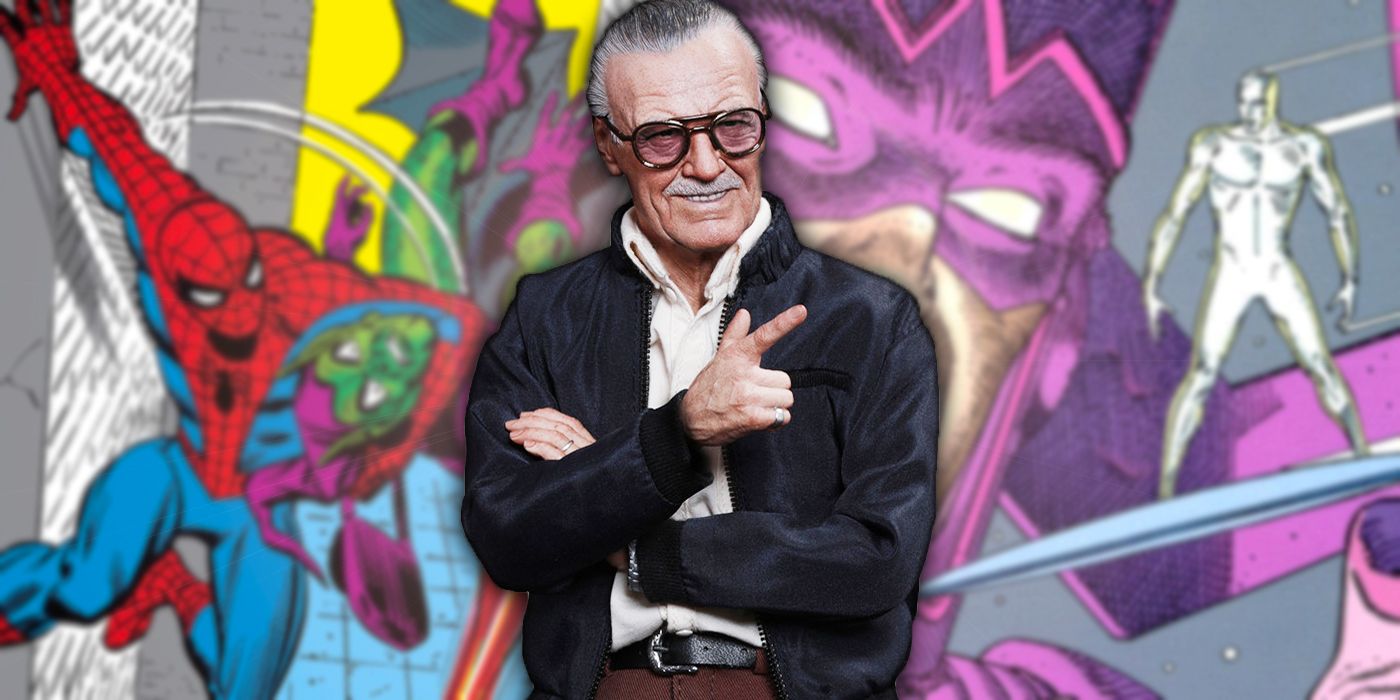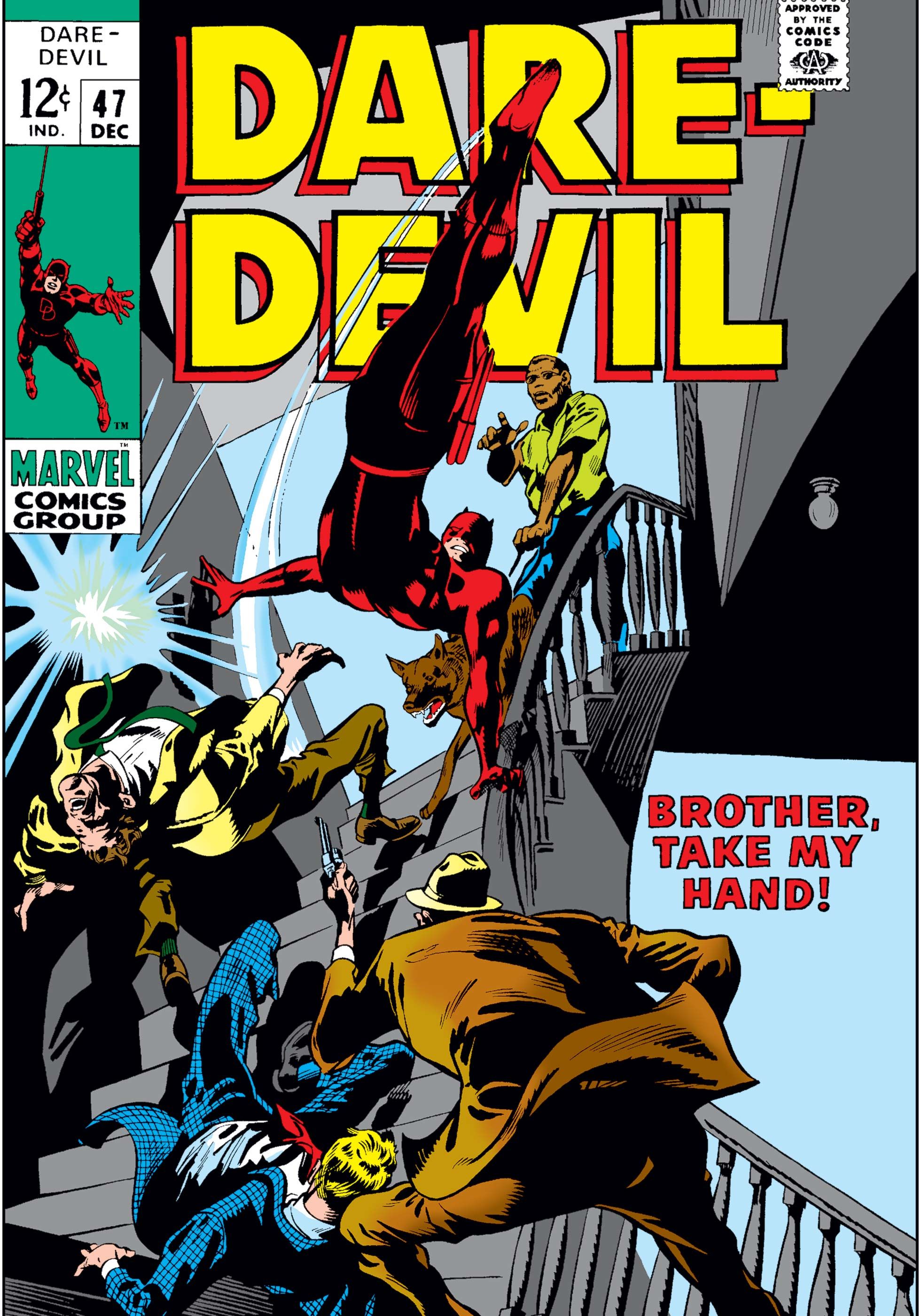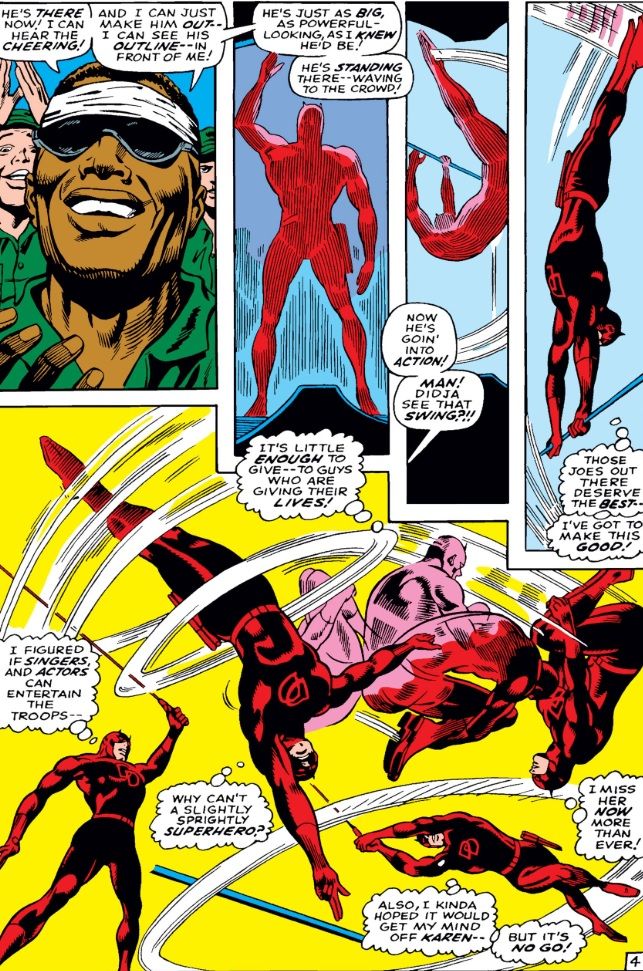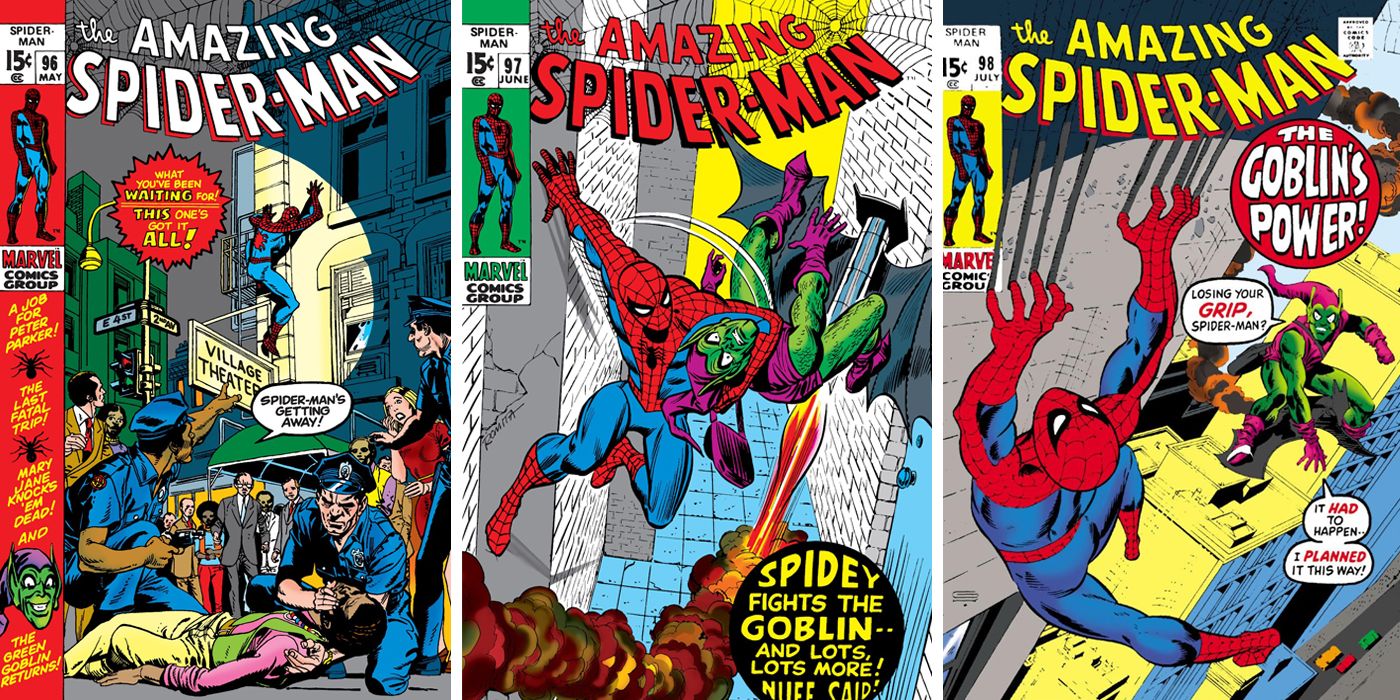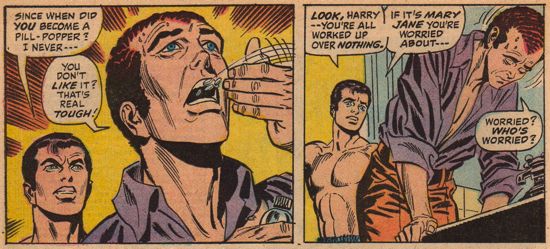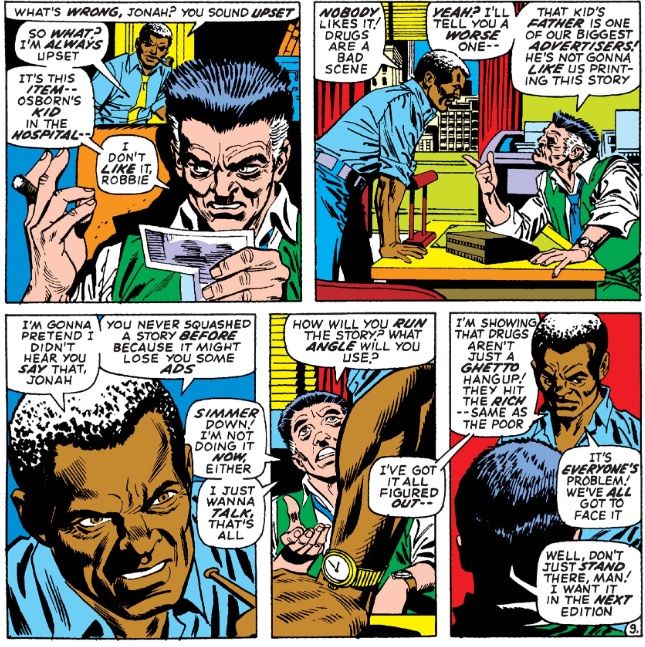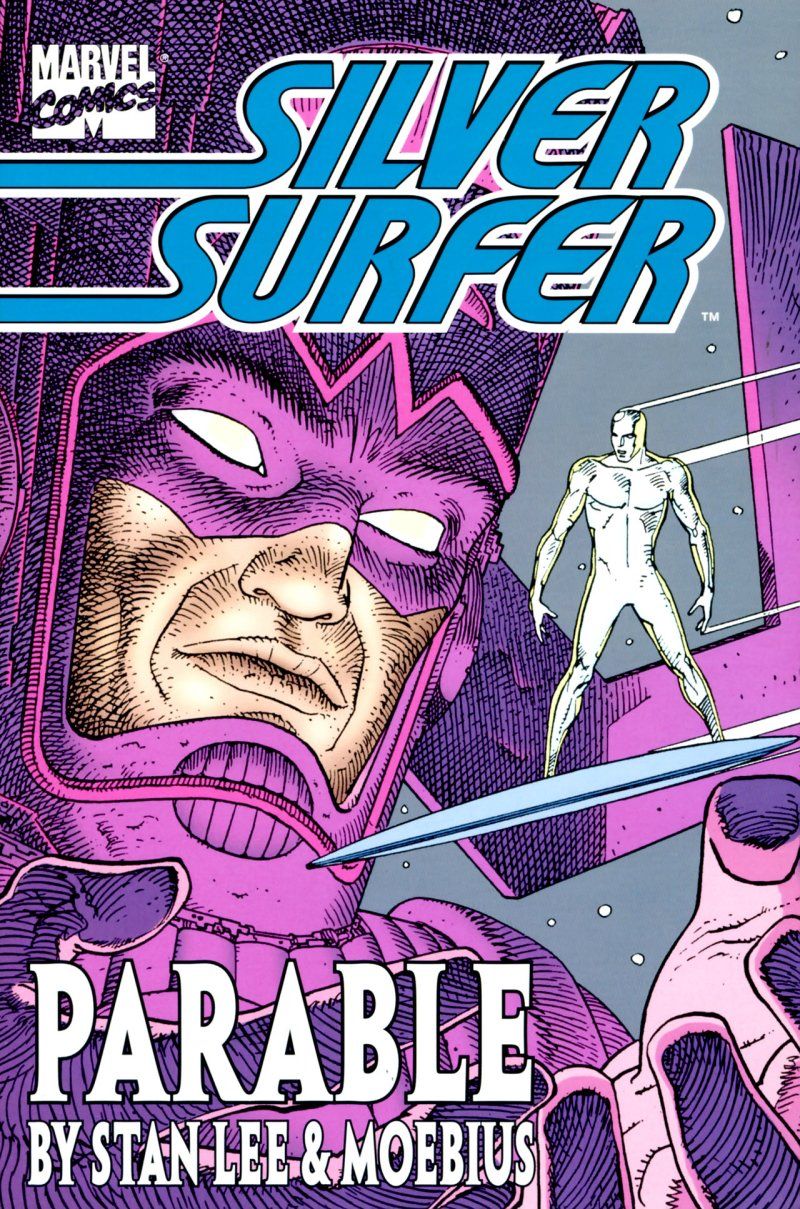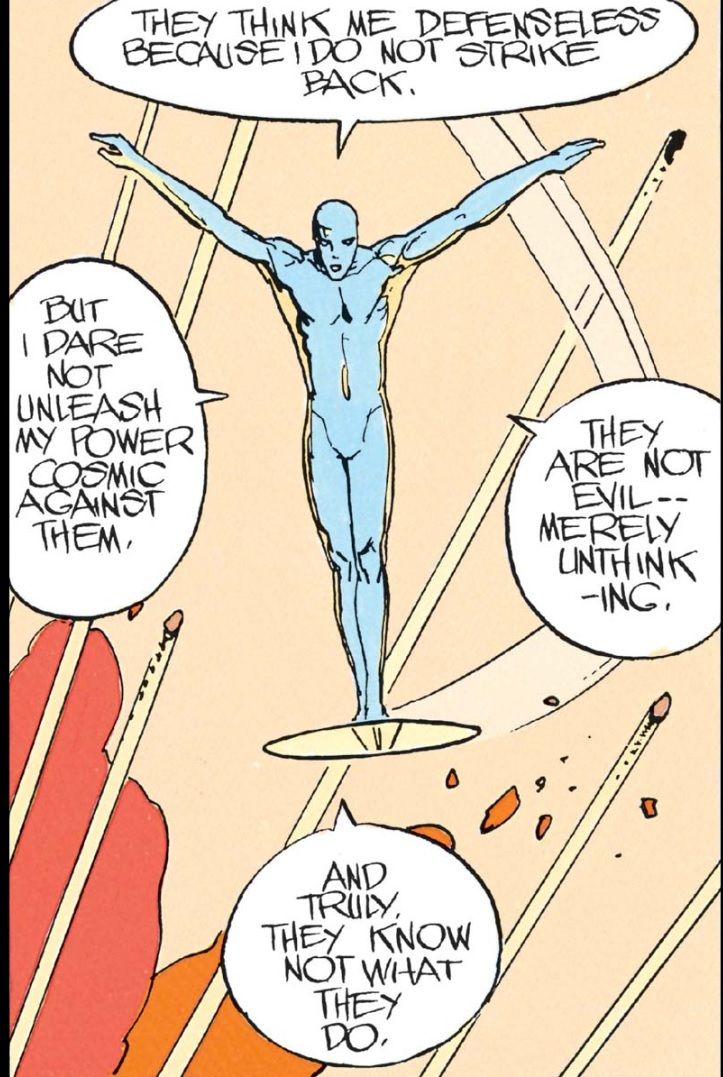Stan Lee passed away on November 12, 2018. For a full account of the legendary comic creator's life and legacy, please read CBR's obituary.
It's impossible to overstate how much Stan Lee influenced the comic books he championed so much. A strong argument can be made that without Lee championing everything he and the Marvel bullpen created from 1961 onward, the world would be very, very different.
RELATED: How Stan Lee Catapulted Superheroes into the American Mainstream
What tends to get lost in the longview is that Lee really was a good scripter and that, like any writer, he had his favorites. Today, we look back at some of those stories that he admitted to being some of his best, as well as the ones that were closest to his heart.
DAREDEVIL GOES TO VIETNAM
The popular history of Daredevil is that The Man Without Fear was "lame" until Frank Miller reinvented the character in the '80s. That, however, is not true at all. There were plenty of good stories with Ol' Hornhead before 1981 and Daredevil #47, "Brother, Take My Hand!" by Lee, Gene Colan, inker George Klein, an uncredited colorist, and letterer Artie Simek is one of them.
The 1968 story -- which Lee always remembered when asked to recount his favorite stories -- begins with Daredevil performing a USO show for American troops in Vietnam, where he meets a GI named Willie, who was recently blinded by a grenade. Sympathetic, Daredevil tells him to look up Matt Murdock if he needs any help.
Back in the States, Willie meets Matt and explains that before the army, he'd been a cop, but was framed for bribery by a mob boss. Murdock brings the case to trial and shreds the supposed witness to Willie's crime via misdirection, which then leads the mob boss's goons to attack Willie and Matt.
Lee's dialogue bounces beautifully off of Colan, Klein and the rest of the creative team's work. Everyone is absolutely firing on all cylinders in service of a story that is earnest without being cloying. No wonder this one stuck in Lee's mind.
HARRY OSBORN OVERDOSES, DEFIES THE COMICS CODE
Amazing Spider-Man #96-98 -- Lee's penultimate story arc before leaving the title with #100 (though he popped back in over the years) -- is a perfect encapsulation of why, for so long, Lee (and Ditko, Romita and here, Gil Kane)'s Spidey was the definitive one.
This arc continues the ongoing soap opera the book was famous for, with Norman Osborn remembering that he's the Green Goblin while Peter still struggles with his feelings about Gwen. But this arc is more famous for a subplot where Harry Osborn gets hooked on drugs.
Sometime in 1971, Lee (then Marvel's editor-in-chief) was approached by the US Department of Health, Education, and Welfare to do an anti-drug story. Lee agreed and had Harry Osborn, feeling insecure seeing Mary Jane flirting constantly with Peter, get targeted by a sleazy pill pusher and hooked on drugs. Eventually, he overdoses, which Kane and colorist Andy Yanchus depict as a nightmare spiral. It's never explicitly stated what he's taking, for the record, but it's implied to be an "upper" of some kind.
The Comics Code Authority took issue with this, as its guidelines forbade narcotic use in any context."I said, 'Screw it,'" Lee retorted during a 1988 interview with Comic Book Artist, "and just took the Code seal off for those three issues."
When there was no outcry over the publication of the story and word got out that the government sanctioned it, the CCA changed its rules to allow drug use to be shown, as long as it was explicitly depicted as horrible. This decision famously led to another infamous storyline surrounding drugs: Dennis O'Neil, Neal Adams, Dick Giordano and Julius Schwartz's Green Lantern/Green Arrow arc, "Snowbirds Don't Fly."
Reading it today, the anti-drug message is woven in a clear, compelling way to grab the attention of the kids and teens that comprised Marve's readership. It still doesn't feel preachy because it dovetails perfectly with Amazing's established tone. Lee and the gang made sure this wasn't just a "Very Special Episode," but another day in the life of Ol' Webhead.
TOWARDS THE '80s (AND AN EISNER AWARD)
In multiple interviews and conversations, Lee always maintained that Spider-Man was his favorite co-creation. But if you dig beyond that, you learn that Lee's true favorite was the Sentinel of the Spaceways, the Silver Surfer. Even long after he'd left day-to-day writing behind, he retained a sort of exclusivity to the Surfer, and asked other writers not to use him (as a 2013 article in Back Issue explained).
The two-issue miniseries Silver Surfer: Parable was a milestone for two reasons. One, it was Lee's first script in some time. Two, it was the American debut of legendary French cartoonist Moebius, who combined his own talents with Lee's to create a story that won them an Eisner in 1989.
The story, in which a destitute Surfer rallies back into action when Galactus arrives on a future Earth and proclaims himself God, is rendered with Moebius' singular acid futuristic landscapes. Lee's script and dialogue, full of the trademark grandiloquent Surfer philosophizing he loved to do, match it perfectly.
It's a unique artistic blend -- and fitting when you learn that Lee once planned to make a monster movie with Alain Resnais -- that still looks like nothing Marvel ever made, back then or today.
Parable, and all of the works on this list, are audacious, ambitious showcases that prove Lee's prodigious talents, and that he was capable of bringing out the best in his collaborators.

